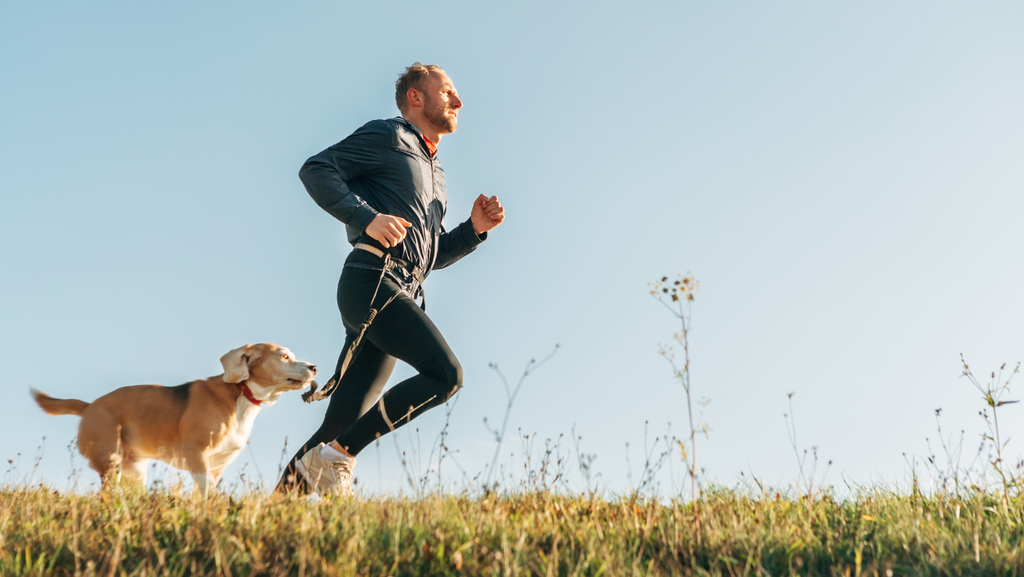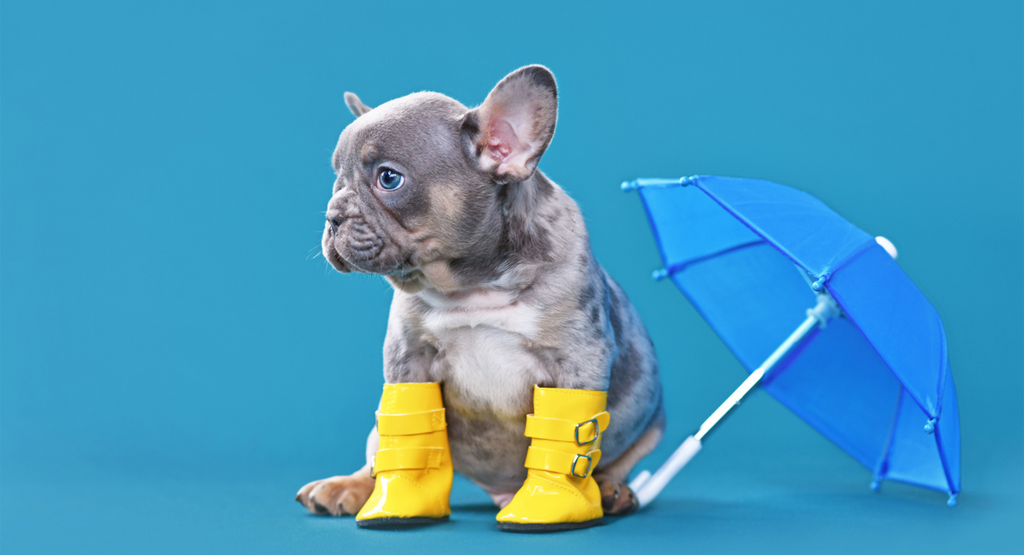What Your Dog’s Sleeping Position Reveals About Them

Dogs often display a variety of amusing or endearing sleeping positions, but these postures can actually provide insight into their physical and emotional state. Veterinarians indicate that a dog's sleeping position can be indicative of several factors, including their comfort level, trust in their environment, body temperature regulation, and overall energy levels. Understanding these cues can help you better assess your dog's well-being. (PetMD, 2024; Ask A Vet, 2025).
1. The Curl-Up (The Donut)

When your dog curls its nose under its tail, it forms a snug ball shape. Sometimes, their nose may touch their hind legs in a shrimp-like curl, and they might even drape their tail over their body.
What it means: This position helps conserve body heat and protects vital organs. It is particularly common in stray or newly adopted dogs that are still adjusting to their environment and may be feeling defensive. Additionally, this behaviour is often observed in colder weather, especially for short-haired dogs (Ask A Vet, 2025; PetMD, 2024).
2. The Side Sleeper

If your dog lies on their side with their legs relaxedly stretched out.
What it means: They feel safe, relaxed, and content. Dogs often choose to sleep in this position when they feel completely at ease in their environment and their body temperature is comfortable. This position is among the most typical for achieving deep, restorative sleep, during which you may frequently observe your dog experiencing 'sleep running' and twitching while dreaming (Casper Editorial Team, 2022; PetMD, 2024; Rosenberry Rooms, 2025).
3. The Superman

Also known as a “sploot”. When your dog lies flat on their belly, extending their front legs out in front and stretching their hind legs out behind.
What it means: Frequently seen in young pups and lively, playful doggos, this position allows dogs to take quick naps while also being prepared to spring into action at any instant for playtime. It indicates a happy, energetic pup with flexible hips (Ask A Vet, 2025; Casper Editorial Team, 2022; Rosenberry Rooms, 2025).
4. The Belly-Up

When your dog sleeps with their paws up in the air and their tummy exposed.
What it means: This is the ultimate sign of trust and relaxation. It also helps them cool down. Dogs regulate their body temperature differently from humans. While people sweat to cool down, dogs perspire mostly only through the pads of their feet. Short-coated and most long-coated dogs have less hair on their bellies, allowing air to circulate more effectively through their paw pads and abdomen when they are standing, helping them stay cool.
By exposing their bellies and elongating their bodies, doggos make themselves vulnerable, which is why dogs only sleep in this position when they feel completely safe in their environment (Ask A Vet, 2025; Gewirtz, 2022).
5. The Cuddle Bug

When your dog curls up and rests against you or snuggles close to another pet
What it means: Canines are social creatures. It is natural for a group of puppies to sleep on top of each other. Being snuggled with their littermates provides a sense of security. Regardless of their age, dogs are at their most defenceless while they sleep, so grouping together offers protection. So, when they sleep snuggling against you, they are bonding and seeking warmth or reassurance. It’s a compliment—your dog thinks you are part of their pack (Ask A Vet, 2025; Gewirtz, 2022; Rosenberry Rooms, 2025).
6. Lion Pose

Also known as the Sphinx Pose, this position occurs when your dog lies on their stomach with their front legs stretched out in front and their head resting on their paws, resembling a lion surveying its territory. Sometimes, they may keep their head lifted and alert, ready to spring into action at any moment.
What it means:
The Lion Pose typically suggests that your dog is in a light resting phase rather than a deep sleep. They are relaxed enough to lie down but remain alert to their surroundings. This position is common in dogs who are keeping watch or who don't want to completely switch off, or only in the beginning phase of the snooze. Casper Editorial Team, 2022; Rosenberry Rooms, 2025).
What your dog’s sleeping position tells you

Dogs often adjust their sleeping positions for various reasons, including comfort and temperature. However, a sudden and consistent change in their sleeping style can sometimes indicate underlying issues such as discomfort, pain, or anxiety. Here are some example changes to observe:
-
Struggling to stand up after lying down: Happy, healthy dogs should be able to stand up straight away, comfortably and easily from lying down. If your dog is slow or uncomfortable when rising, pushing themselves up in phases, or shifting their weight, this is a signal of underlying musculoskeletal problems like hip dysplasia
-
Side Sleeper to Curl-Up Position: This shift may suggest that the dog is feeling cold, insecure, or is trying to protect a painful area.
-
Belly-Up to No Longer Sleeping Belly-Up: A dog that previously slept with its belly up but has stopped may be experiencing lower confidence, joint discomfort, or digestive issues.
-
Superman Position to Avoiding Superman: If a dog avoids the full extension position, it may be indicative of hip, knee, or abdominal pain.
-
Side Sleeper to Always in Lion Pose: Consistently sleeping in a Lion Pose for a prolonged duration, even at night, could signal anxiety, environmental stress, respiratory difficulties, or a desire to avoid putting pressure on a sore side or hip.
-
Restless Position Switching: Frequent changes in sleeping position may be linked to discomfort, skin irritations, arthritis pain, or respiratory problems.
So, if you notice that your dog suddenly changes their sleeping position, and this new sleeping pose persists for more than a few days, especially alongside other symptoms like limping, whining, or changes in appetite and energy level, it is time to consult a veterinarian for a check-up.
Conclusion
While every dog has a preferred sleeping style, changes in their sleeping position can indicate shifts in health or comfort. Pay attention, and you will learn a lot about what’s going on in your dog’s world—even while they are fast asleep.
References
-
Casper Editorial Team. (2025, February 12). 10 Dog Sleeping Positions + Their Adorable Meanings. Casper Sleep. https://casper.com/blogs/article/dog-sleeping-positions
-
Dog Sleeping Positions: What They Mean & Chart Guide | 2025. (2025, August 4). Rosenberry Rooms. https://www.rosenberryrooms.com/dog-sleeping-positions/
-
Gewirtz, Elaine Waldorf. (2022, August 18). Why Does My Dog Sleep On Their Back? American Kennel Club. https://www.akc.org/expert-advice/health/why-does-my-dog-sleep-on-his-back/
-
Houston, D. (2025, June 13). Dog Sleeping Positions and What They Mean – 2025 Vet Insight Into Your Pup’s Rest 🛌🐶. Ask a Vet. https://askavet.com/blogs/dog-behavior-training/dog-sleeping-positions-and-what-they-mean-vet-insight-into-your-pup-s-rest-%F0%9F%9B%8C%F0%9F%90%B6
-
K9 Basics. (2023, March 21). K9Basics. K9Basics; K9 Basics. https://k9basics.com/why-does-my-dog-like-to-sleep-on-me/
-
Leeson, J. (2023, June 2). 6 Dog Sleeping Positions and What They Mean. Petmd.com; PetMD. https://www.petmd.com/dog/general-health/dog-sleeping-positions-and-what-they-mean



